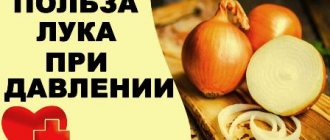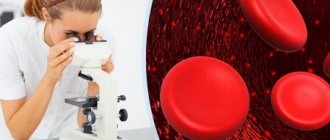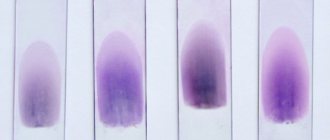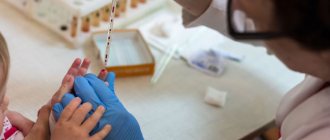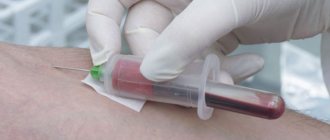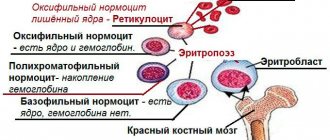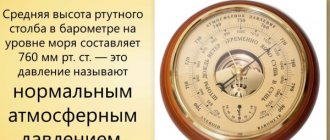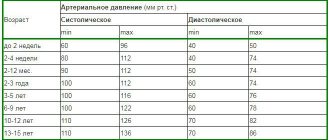Deceit and love
The song was written in 1959 for the anti-religious film “Clouds over Borsk”. Another case when the film was long forgotten, but the song went to the people and became famous. The film was not banned, but they refrained from showing it. This is not surprising, since it contains not only the theme of religion, but also the controversial aspects of the Soviet school. In the story, the daughter of the local head of the timber industry enterprise in the Russian province, Olya Ryzhkova, is friends with classmate Mitya Saenko. One evening on the bank of the river she confesses to Mitya that she knows everything about him, he is a read book to her, so she will never be able to love him. Mitya hints: he has a secret that is not the time to reveal. The girl asks to reveal the secret and jokingly promises to marry him for this revelation.
The end of the conversation was accidentally heard by the school director and the next day he called Olya to the board. Of course, the Soviet functionary from pedagogy was far from the intricacies of teenage psychology and, in line with ideological and educational work, made it clear to the whole class that Olya was a girl who had lost her maiden honor. Ryzhkova said that he is not a teacher, but a gossip. And then it began. She, a Komsomol member, was deprived of the right to work with the pioneers as a counselor. At home, in a conversation with her father, she threw a Komsomol card on the table, which caused my dad to have a heart attack. Finally, Mitya Sayenko, in a private conversation, squinting at the horizon, revealed his secret to her: “My aunt and I are sectarians.” In the story by Semyon Lungin, on which the film is based, it is written in black and white that we are talking about Pentecostals. As explained, this is a religious movement that broke away from the traditional Orthodox Church. But it's not that. After Olga's father was hospitalized, the insidious sectarians convince the girl of their brotherly love for her, move into her house and take over. Forced to leave school. They turn her into a holy fool. Ultimately, the girl’s psyche is broken. They decide to crucify her on the cross. Fortunately, the Komsomol members manage to save Olya.
Lungin explained: the story was written based on a real event. In real life, Olga’s prototype was not saved.
Causes of chylous blood
In most cases, the reason for detecting fatty blood is the neglect of the rules for preparing for the study:
- 1-2 days before blood sampling, it is necessary to exclude fried and fatty foods from the diet;
- the day before the test, alcohol consumption is prohibited;
- Blood sampling is carried out strictly on an empty stomach (the last meal the day before should be at least 12 hours before the test).
Failure to comply with these points leads to a temporary increase in triglycerides even in the blood of a healthy person. In this case, the doctor directs the patient to take the test again. If nutritional causes are excluded, hyperlipidemia is a signal of a violation of fat metabolism and metabolism in general. The condition requires additional examination of the patient.
Eating foods that are too fatty the day before donating blood can lead to chylous blood.
When systematically identifying chylous blood, it is necessary to find out why this condition occurs. Its pathological causes may be the following:
- obesity;
- diseases of the thyroid gland with reduced function;
- diabetes;
- liver diseases (cirrhosis, viral hepatitis, alcohol damage);
- abnormalities in the lymphatic vascular system;
- hereditary forms of hyperlipidemia with a predominant increase in triglyceride levels;
- kidney disease, especially in the presence of nephrotic syndrome or renal failure.
Hyperlipidemia with an increase in neutral fat in the blood can accompany the following diseases:
- cardiovascular (atherosclerosis, hypertension, all types of coronary heart disease);
- gout;
- pancreatitis;
- calcium metabolism disorder;
- anorexia nervosa;
- chronic stress;
- genetic (glycogenosis, chromosomal pathology, acute intermittent porphyria);
- fractures of large tubular bones.
The main danger of “fat blood” is the development of atherosclerosis
In some cases, the appearance of fat in the blood can be caused by taking certain medications:
- glucocorticosteroids;
- hormonal drugs with a high dose of estrogen;
- diuretics;
- beta-adrenergic blockers.
Is it her own fault?
Felix Dallada
According to the plot, when everyone turns away from Olga, she goes to the river, either to drown herself, or to make a choice at the crossroads of life. Here a song was supposed to sound, conveying her inner turmoil. Director Vasily Ordynsky invited composer Alexei Muravlev to write the music. He, in turn, called his friend, the poet Felix Dallada. True, Felix Danilovich, being a professor at the Peoples' Friendship University, hid his authorship. I thought the song was a trifle. At first it seemed to Muravlev that the task in front of him was too difficult and he would not be able to cope. The film was filmed in the regional centers of the Nizhny Novgorod and Ryazan regions. Walking through the ancient quarters of the province, he suddenly heard women singing different songs in the evenings, similar in one thing: they repeated the same lines several times.
Alexey Muravlev
Based on this manner, the composer wrote a melody. Instrumented it and adapted it for male vocals. Having heard the work with words, the director rejected the proposal. After all, the film is not at all about unrequited love. Nobody kissed and pardoned the main character. But then Ordynsky realized: the song has a good theme of disappointed expectations. I decided to include it in the picture not in the foreground, but in the background, along with the whistles of steamships, the splash of the river, and conversations on the deck. This is how it sounds at the 30th minute of the film, when Olga crosses the Volga on a pontoon mobile bridge. The melody may not be noticed. But those who wanted to noticed. Interestingly, in the film it is performed by men behind the scenes accompanied by a balalaika and guitar. In contrast to the female version, in the male version many words sound like an accusation. For example: “It’s your own fault, you’re to blame for everything, you still want to justify yourself. So why then did you allow yourself to be kissed on this moonlit night?” When a woman sings the same thing, these lines sound like a reproach to herself. Also, in the original there were no words about mother, unlike those existing in the modern version: “Oh, my mother, oh, my mother! Let me go for a walk. At night the stars shine, at night they give affection, at night everyone talks about love.” The fact is that the heroine of the film did not have a mother.
The phenomenon of the poet’s words is that they do not describe in any way what action the young man committed by offending the girl. There is only her regret about the intimacy that happened. But from this it is clear by default that he gave up and quit.
Treatment of chylous blood condition
A qualified doctor will tell you what to do if hyperlipidemia is detected. The specialization of the doctor you need to contact depends on the cause of the pathology (gastroenterologist, endocrinologist, cardiologist).
Important! If you have hyperlipidemia, you should not self-medicate; you should seek qualified medical help.
First of all, you need to start adjusting your lifestyle. This includes following a lipid-lowering diet and regular moderate exercise. In combination, normalization of nutrition and sports can effectively combat excess weight and increased levels of fat in the blood serum. Not only the level of triglycerides decreases, but also total cholesterol, low and very low density lipoproteins. All these substances are factors in the development of vascular atherosclerosis.
Lipid-lowering diet
The main principle of this diet is to limit the consumption of fatty foods rich in triglycerides and cholesterol and exclude simple carbohydrates.
The main treatment measure for fatty blood is dietary nutrition.
Food is taken fractionally 5-6 times a day, in small portions. It is preferable to use the following types of heat treatment of products: boiling in water or steaming, stewing, baking. Excludes stewing in oil and frying.
Calorie intake restrictions are provided for overweight and obese individuals. The daily norm for such people is up to 1200 kcal. It is also advisable to have dinner no later than 19.00.
List of recommended, prohibited and restricted products:
| Product group | Recommended products (can be consumed daily) | Limited consumption products (allowed to take up to 2 times a week) | Prohibited Products |
| Dairy and eggs | Low-fat varieties of kefir, yogurt, cottage cheese | Low fat cottage cheese and kefir, egg white | Full-fat dairy products, egg yolk |
| Bakery products | Whole wheat bread | Rye bread | Buttery sweet pastries, white bread, pasta |
| Cereals and legumes | Oatmeal, millet porridge without butter or milk, legumes | Buckwheat, rice porridge | Porridge with milk |
| Meat | Lean beef, chicken breast | Fatty meats, liver, kidneys and other offal, smoked meats, canned food, sausages, sausages | |
| Fish and seafood | Marine (and fatty as well) | River fish | Fish roe and liver, crabs, shrimp, crayfish |
| Vegetables | Any low-starch vegetables, raw and cooked: cabbage, carrots, beets, celery, zucchini, cucumber, radish, tomato, onion, herbs, seaweed | Potatoes, mushrooms | Roasted vegetables, especially potatoes |
| Fruits | Any fruits and berries, fresh or baked: apples, pears, apricots, peaches; dried fruits | Bananas, grapes | |
| Fats | Vegetable oils, preferably cold pressed in their natural form: olive, corn, sunflower | Margarine, animal fat, coconut and palm oil | |
| Sauces and spices | Spices and herbs, mustard, ketchup, vinegar | Mayonnaise and all other fatty sauces | |
| Sweets and nuts | Honey, walnuts, almonds, hazelnuts | All confectionery, chocolate, sugar | |
| Beverages | Compotes, still mineral water, fruit drinks, fresh juices and smoothies without sugar from allowed fruits | Instant coffee, black and green tea without sugar, red wine up to one glass up to 2 times a week | Coffee, cocoa, strong alcoholic drinks, juices with sugar, sweet carbonated drinks |
Important! When the blood is chylous, an increased drinking regimen is necessary.
It is recommended to drink about 2 liters of fluid per day, but only when there are no restrictions due to existing pathology of the heart and kidneys. It is beneficial to drink water with lemon juice.
Drug treatment for “fat blood”
Pharmacological correction of hyperlipidemia is carried out in accordance with the diagnosis, which is the cause of high levels of lipids in the blood. In order to reduce the concentration of triglycerides, lipoproteins, cholesterol in the blood, the following medications can be prescribed:
- statins (Atorvastatin, Razuvastatin, Simvastatin);
- ion exchange resins (Colestipol, Cholestyramine);
- Nicotinic acid, Nicofuranose;
- fibrates (Benzafibrate, Clofibrate)
- Probucol;
- Ezetimibe;
- preparations based on omega-3 fatty acids.
Attention! Drug correction of elevated blood lipid levels can only be prescribed by a doctor.
Treatment of the underlying disease, the manifestation of which is hyperlipidemia, is also mandatory.
Only a doctor should prescribe statins to lower blood cholesterol
Phytotherapy
In addition to diet and medication, herbal therapies can be used to reduce triglyceride and cholesterol levels in the blood.
For chylous blood conditions, the following may be helpful:
- infusion of meadowsweet leaves;
- infusion of currant and raspberry leaves;
- infusion of cranberry fruits;
- tincture based on dill and garlic;
- flax seed oil;
- chamomile decoction;
- licorice root decoction.
The use of all traditional methods must be agreed upon with the attending physician.
References
- ESC/EOA Clinical Guidelines for the Diagnosis and Treatment of Dyslipidaemias, 2021.
- Russian recommendations VI revision. Diagnosis and correction of lipid metabolism disorders for the prevention and treatment of atherosclerosis, 2021.
- NCEP Expert Panel on detection, evaluation and treatment of high blood cholesterol in adults. Executive summary of the third report of the National Cholesterol Education Program (NCEP) Expert Panel on detection, evaluation and treatment of high blood cholesterol in adults (Adult Treatment Panel III). JAMA 2001;285:2486–2497.
1.What are cholesterol and triglycerides?
Triglycerides and cholesterol are fatty substances in the blood. Cholesterol in the blood is attached to proteins. The combination of protein and cholesterol is called lipoprotein. A lipoprotein test shows the levels of total cholesterol, low-density lipoprotein (LDL or beta-lipoprotein), high-density lipoprotein (HDL) and triglycerides.
- Cholesterol.
Our body uses cholesterol to build new cells and produce hormones. If cholesterol levels are elevated, it accumulates in the arteries, forming plaques. A large number of plaques increases the chances of heart attack and stroke. - High density lipoprotein (HDL).
High-density lipoprotein helps remove excess fat from the body by taking it from the blood and delivering it to the liver. It is sometimes called “good” cholesterol. High HDL levels reduce the risk of heart disease and stroke. - Low-density lipoprotein (LDL).
Low-density lipoprotein carries fat from the liver to other parts of the body. A low LDL level is normal, because... The body needs it so that certain parts of the body receive the necessary fat. But if LDL is elevated, it increases the risk of developing heart disease. This is why it is sometimes called “bad” cholesterol. - Very low density lipoproteins (VLDL).
VLDL contains very little protein and its main job is to distribute triglycerides that are produced in your liver. High VLDL levels can also lead to cholesterol buildup in the arteries. - Triglycerides.
Triglycerides are a special type of fat that is used to store energy and transfer it to muscles. If you have elevated triglycerides and LDL, this can lead to heart disease faster than just elevated cholesterol.
Consequences of elevated blood lipids
Hyperlipidemia as a symptom is included in the concept of metabolic syndrome or the so-called “deadly quartet”. This symptom complex provides for the presence of three more nosologies: obesity, type 2 diabetes mellitus, arterial hypertension.
Attention! Metabolic syndrome kills millions of people every year.
There is a trend towards an increase in the number of patients with this pathology, and the average age of patients is becoming younger every year. This fact is directly related to the lifestyle of modern people: unhealthy diet, physical inactivity, bad habits. The influence of these factors significantly increases the risk of cardiovascular diseases, such as ischemic heart disease, atherosclerosis, and hypertension. Death occurs as a result of fatal arrhythmia, progressive heart failure, extensive myocardial infarction, or stroke.
Thus, there is nothing critical in identifying chylous blood during laboratory diagnostics when the reason for this is improper preparation for the analysis. If all the rules are followed, this result means that the patient needs to be examined to identify the cause of the pathology.
